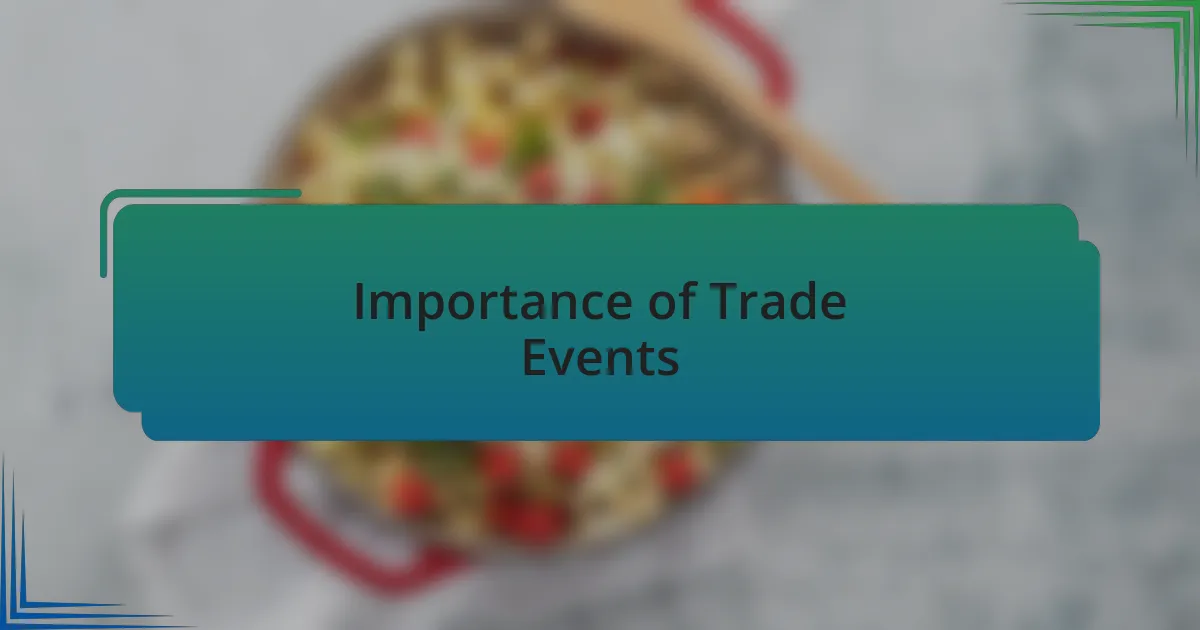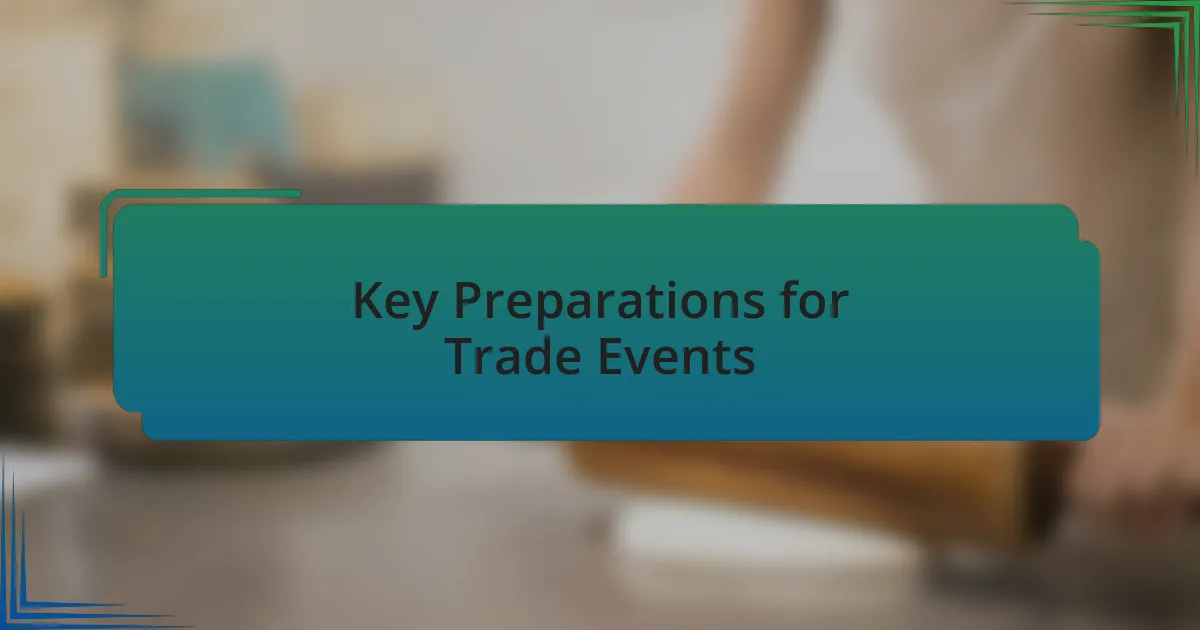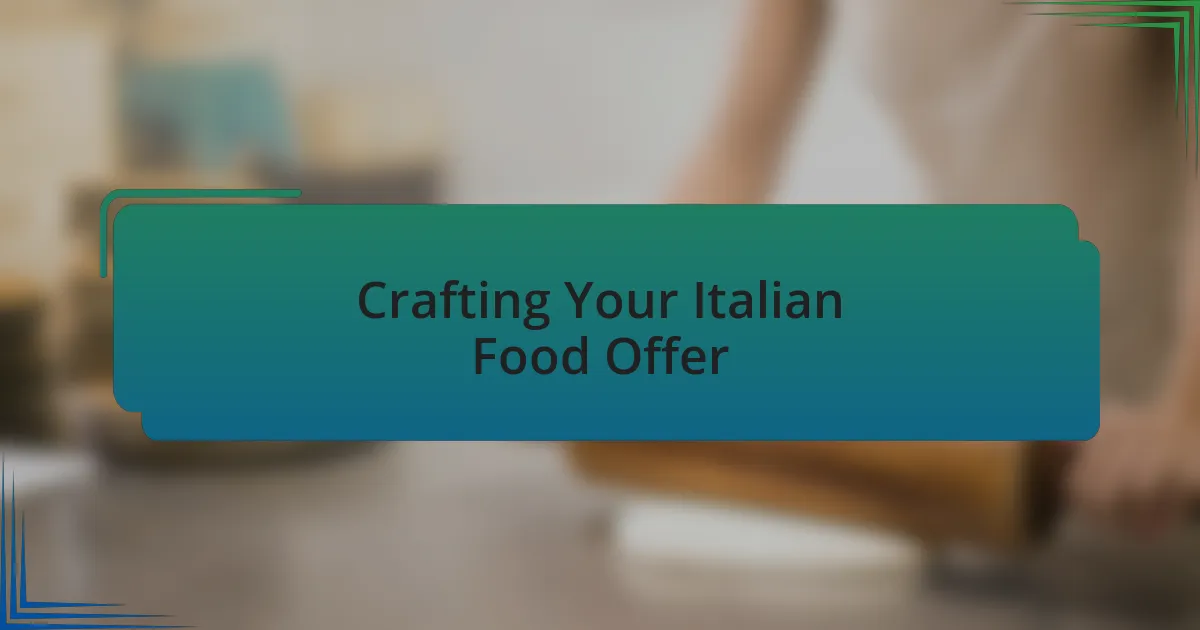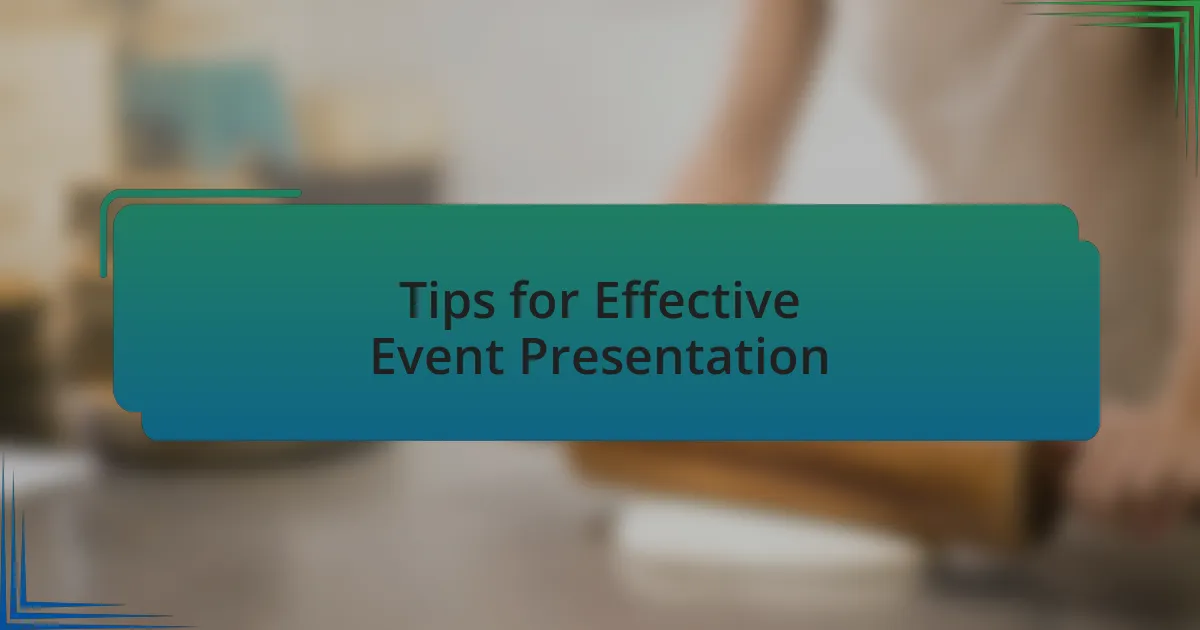Key takeaways:
- Understanding the authenticity and quality of Italian food products is essential for effective trading, generally prioritizing regional specialties and artisanal processes.
- Trade events facilitate personal connections and insights into market trends, enabling traders to make informed decisions and foster collaboration within the industry.
- Preparation, audience understanding, and engaging storytelling are critical for successful presentations at trade events, enhancing rapport with potential partners.
- Building trust through communication, follow-up, and active listening transforms business transactions into lasting partnerships in food trading.

Understanding Italian Food Trading
Understanding Italian food trading is like peeling back the layers of a wonderfully crafted lasagna. Each layer represents different flavors, emotions, and stories behind Italy’s rich culinary heritage. When I first ventured into this field, I was struck by how deeply ingrained these traditions are in the culture, leading me to wonder: how can one fully appreciate a product without understanding its roots?
As I navigated the world of Italian food imports and exports, I discovered that quality often speaks louder than marketing claims. For instance, I remember visiting a family-run olive oil mill in Tuscany. The passion and precision that went into every bottle of oil were nothing short of inspiring. It made me realize that consumers are increasingly seeking authenticity and transparency in what they purchase, pushing traders to prioritize quality over quantity.
Moreover, the diversity within Italian cuisine adds another layer of complexity to food trading. I’ve seen how regional specialties, like Sicilian caponata or Tuscan bread, lead to distinct trading practices that highlight local ingredients and methods. This uniqueness not only drives demand but also encourages deeper connections between producers and consumers—a vital aspect of any successful trading strategy. Have you experienced this connection in your dealings? It makes all the difference.

Importance of Trade Events
Trade events serve as a vibrant marketplace where producers and buyers can connect on a personal level. I recall my first experience at a food trade show in Milan, where the energy was palpable. Being able to taste exquisite Italian cheeses and chat with the artisans behind them was eye-opening—it reinforced my belief that genuine relationships often lead to lasting partnerships in the trading world.
These events also play a crucial role in understanding market trends and consumer preferences. I remember attending a seminar at one such event, where experts discussed the rising demand for organic Italian pasta. It dawned on me that being physically present allows traders like myself to gauge enthusiasm around emerging products firsthand, empowering us to make more informed decisions back home.
Furthermore, trade events foster collaboration within the industry, leading to innovative ideas and partnerships. Last year, I witnessed a meeting of minds between a small winery and a local distributor, resulting in an exciting joint marketing campaign. This type of synergy can be transformative—not just for individual businesses, but for Italian food trading as a whole. Have you ever considered how much potential lies in those brief encounters?

Key Preparations for Trade Events
Preparation for a trade event is critical for success, and one of the most important steps is meticulous planning. I always create a comprehensive checklist weeks in advance, including not only logistics like booth setup but also ensuring I have samples of our best products readily available. The last time I rushed through this checklist, I forgot essential marketing materials, which caused unnecessary stress.
Another key aspect is understanding your audience. Before attending an event, I research the attendees and their interests to tailor my conversations and presentations. For instance, at a trade show focused on luxury Italian goods, I made it a point to highlight the unique qualities of our artisanal products. This effort clearly resonated with buyers who were looking for authenticity and quality; it’s amazing how a little insight can lead to meaningful connections.
Finally, practicing engaging pitches is something I can’t stress enough. I’ve learned that having a concise and compelling story can captivate potential partners. One time, while discussing our olive oil, I shared a personal story about my family’s long-standing tradition of olive harvesting. It not only attracted attention but also established a human connection with the audience. Have you thought about how your story could make your product more memorable?

Researching Italian Food Trends
Researching current Italian food trends is essential for any trader who wants to stay ahead in the market. I often spend time analyzing industry reports and following food influencers who showcase the latest culinary movements. For instance, during my last trade event preparation, I discovered a growing interest in plant-based Italian dishes, which prompted me to explore new vegetarian product options to present.
I find that engaging with social media platforms can provide real-time insights into what consumers are currently craving. Looking through hashtags like #ItalianFoodTrends, I stumbled upon an intriguing trend: the rise of regional specialties from lesser-known Italian regions. This new knowledge inspired me to include products that celebrate the rich diversity of Italy, like Sicilian caponata or Puglian orecchiette, sparking genuine excitement among potential buyers.
Lastly, I’ve learned that attending local Italian food festivals can offer invaluable firsthand experience of trending products. At a recent festival, I tasted a variety of artisanal cheeses that were gaining popularity due to their unique flavor profiles. Witnessing the enthusiasm of fellow attendees not only solidified my focus on these products but also encouraged me to create partnerships with emerging local producers. Have you considered how participating in such events could unveil hidden gems for your own product lineup?

Crafting Your Italian Food Offer
Crafting your Italian food offer requires not only knowledge of trends but also a personal touch. I recall a time when I experimented with incorporating local artisan pizzas into my portfolio. The response was overwhelming, with buyers not only appreciating the authentic flavors but also the story behind the products, which highlighted the craftsmanship of the pizza makers. Isn’t it fascinating how a narrative can elevate a simple food item into a sought-after experience?
Understanding your audience is equally crucial. When I tailored my offers to feature gluten-free pasta options, I was pleasantly surprised by the enthusiastic feedback from health-conscious consumers. It made me realize that connecting with customer needs can lead to unexpected opportunities. How well do you know the preferences of your target market?
Moreover, the aesthetics of presentation cannot be overlooked. I remember meticulously arranging samples of my Italian cheeses in vibrant, colorful displays at a recent event. This not only attracted more foot traffic but also sparked conversations about the flavors and origins of each cheese. Have you thought about how the visual appeal of your offerings could captivate potential buyers?

Building Effective Trade Relationships
Building effective trade relationships is all about trust and communication. I once struck up a conversation with a potential distributor at a trade show, sharing not just what I offered but also my journey in the Italian food industry. That openness fostered a bond that went beyond business; it created a partnership grounded in mutual respect. How often do you take the time to build rapport with your partners?
Follow-up is equally essential. After a successful meeting, I made it a point to send a personalized thank-you email that included a brief recap of our discussion and some additional insights about the culinary trends we both care about. To my delight, this simple gesture not only solidified our connection but also paved the way for further collaboration. Have you considered how small acts of gratitude could open doors in your trading network?
Listening is another vital aspect of nurturing these relationships. During a casual lunch meeting with one of my suppliers, I learned about their challenges regarding sourcing particular ingredients. This moment of vulnerability not only allowed me to offer help but also strengthened our relationship. Do you actively listen to your partners’ needs and concerns? Engaging on such a personal level can transform business transactions into genuine partnerships.

Tips for Effective Event Presentation
When preparing for an event presentation, it’s crucial to engage your audience right from the start. I remember standing in front of a diverse crowd, my heart racing, but I channeled that energy into sharing a compelling story about my family’s Italian recipes. This not only captured their attention but also invoked emotions, making my presentation memorable. Have you ever thought about how a personal story can make your message resonate more with listeners?
Visual aids can greatly enhance your presentation, too. I once used a simple slide deck with vibrant images of fresh ingredients and traditional dishes, which provided a visual feast for the audience. It reinforced what I was saying and made the information more relatable. Have you ever struggled to keep your audience engaged? Finding the right visuals can be the key to turning disinterest into excitement.
Practicing your delivery is just as important as crafting your message. Before one trade event, I rehearsed in front of friends and even recorded myself. Watching the playback allowed me to refine my body language and pacing, making me feel more confident on stage. How often do you overlook the power of practice? It’s an underrated tool that can significantly enhance the effectiveness of your presentation.